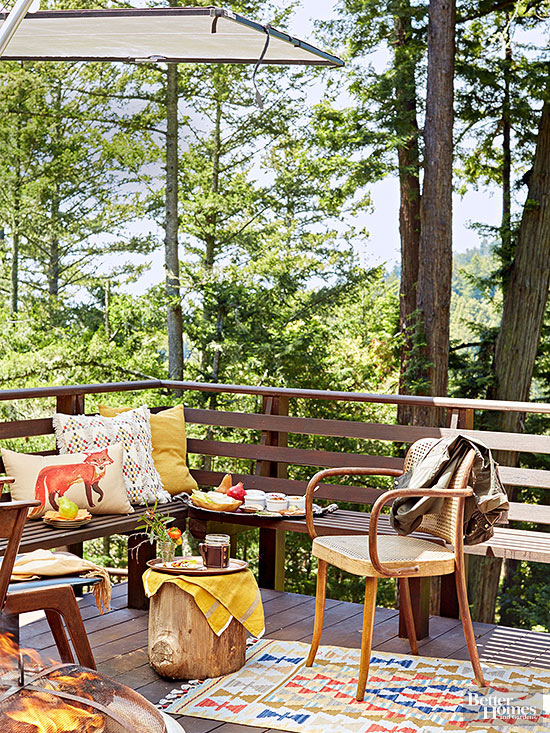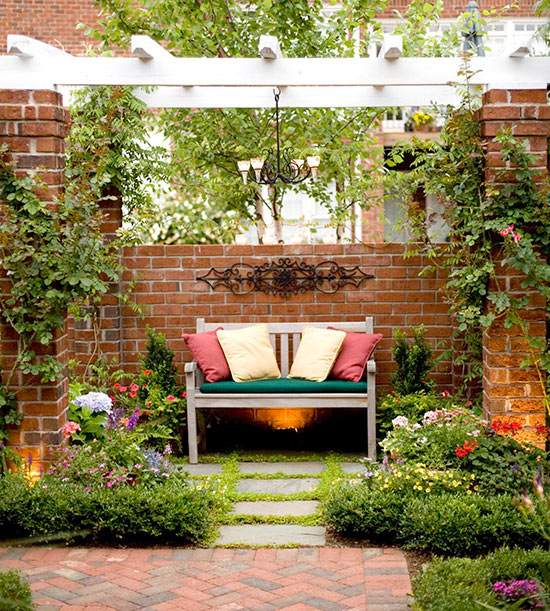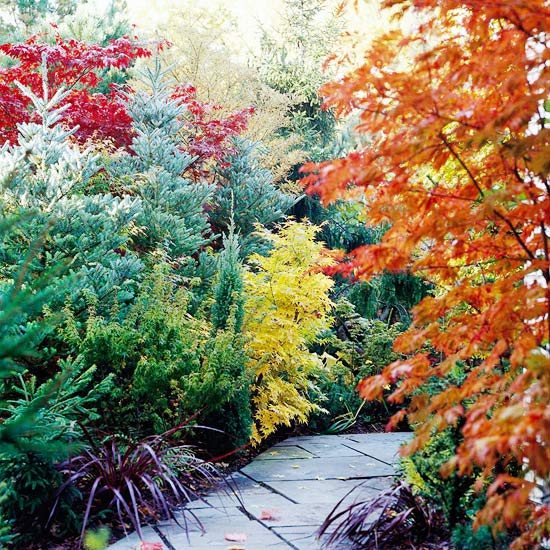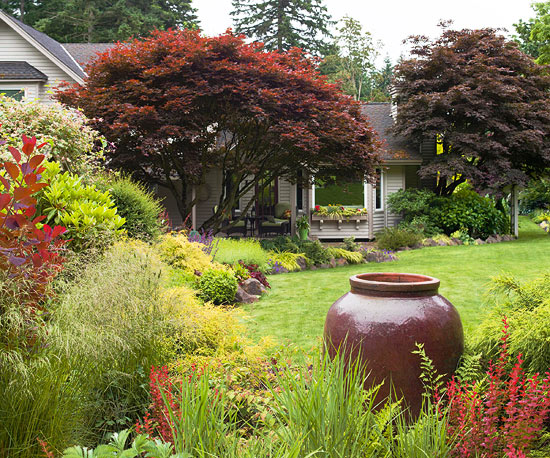






Every family has different must-haves, but two spots shouldn't be skipped as you map your backyard landscaping, says Julie Moir Messervy, a principal at Julie Moir Messervy Design Studio. Those are a gathering zone and a getaway zone. "Your backyard is your living zone, so it's the place where you want privacy, but you want to have activity as well as the possibility of contemplative space," says Messervy, who authored Home Outside: Creating the Landscape You Love (Taunton Press, 2009).
A gathering space may already exist, possibly attached to the house -- such as a back deck or patio. If you don't have one, place it as close to the kitchen as possible, a pragmatic choice that makes eating and dining outside that much easier.
Make a patio retreat.
continue reading below
The second zone, a backyard getaway space, is less common but no less necessary. That spot -- be it a corner with a hammock, a little terrace underneath a big tree, or even just two Adirondack chairs -- allows you to look back on your house, read a book, or watch the kids while they play. As such, when you decide the elements of your backyard landscaping, the getaway zone should be as far away from the gathering zone as possible. "People forget to put those little spots in their yard and just keep it all open and undifferentiated, and then they don't use it for anything," Messervy says. "Even if you don't actually sit on that bench under the oak tree, the fact that it's there makes you feel good. Little hideaway spots are great -- and kids love them, too."

Once you've established the getaway and gathering zones, your next backyard landscaping step should be to figure out what to do with the space in between. There are countless possibilities, which can also be overwhelming.
A place to start, Messervy says, is with the edges -- either the edges of the two backyard landscaping zones you just established, or the edges of your backyard itself. If you have a fence or just want to delineate the space between your yard and a neighbor's yard, that may mean creating narrow borders with a mix of evergreen shrubs or trees for year-round interest and structure, and supplementing it with ornamental grasses, perennials, and annuals. "Planting against a fence gives you this sense of being in a leafy bower, and it adds layers to your backyard landscaping," Messervy says.
Get tips for creating more privacy along the edges of your yard.
Planting window boxes, hanging baskets, and containers with flowers, dwarf trees, shrubs, and even vegetables introduces people to the many varieties of plants available for backyard landscaping and gives them experience with gardening, too. Those containers and small edging flower beds are also confidence-building spots, particularly for new gardeners. "It's a wonderful place to start, especially near the house, because close-in beds or containers are easy to maintain, to water, to fertilize," Messervy says. "A lot of people are paralyzed by a fear of killing plants. Successfully maintaining a few containers of annuals lets homeowners know that they actually have a green thumb."
Once you've established a backyard border planting, your next step should be to extend that edge to larger beds as time and budget allows. For example, a corner of a patio filled with easy-grow perennials may be enlarged to wrap around the whole perimeter of the gathering space. "You really start to bring color and excitement through different seasons," Messervy says.
Browse our favorite fuss-free plants.

What's left, then, is the middle of the yard, surrounded by a belt of plantings that are organized around gathering and getaway spaces. Here, Messervy advocates nothing for the backyard landscaping other than lawn -- a big open space in which to play that can offer visual relief. "If you think of your lawn as a pool of space surrounded by attractive plantings, all carefully edged, you create an active, lovely, centrally focused open area that acts as a visual centerpiece for the whole backyard," she says.
The lawn can be designed using a variety of shapes -- circular, oval, oblong, or rectangular, for example -- or even a series of small, interconnected circles, all surrounded by plantings. "Outline the lawn with crisp spaded edges and turn what might otherwise feel left over into your backyard's greatest asset," Messervy says.
Get lawn design tips.
Copyright © www.100flowers.win Botanic Garden All Rights Reserved